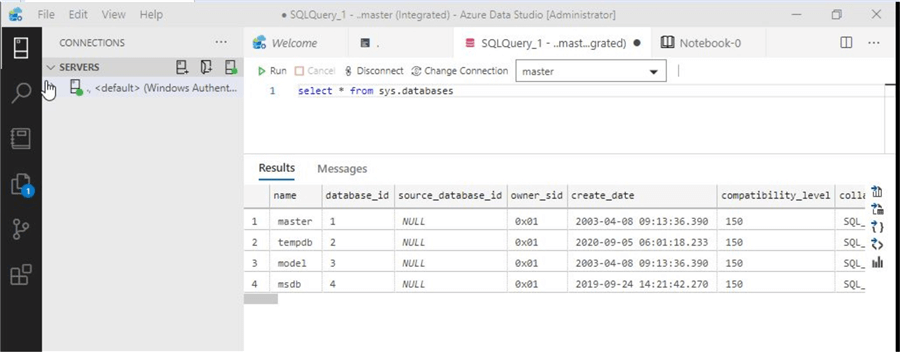
While the Azure Data Studio is not intended to compete with the charts from available reporting and analytics applications, there are many times when all you want is a quick exploratory look.

Once you find "Run current query with actual plan" you'll also be reminded that M will do the trick (same as in SSMS). The "Explain" button in the toolbar provides an estimated execution plan, but how do you access the actual plan? Unclear until you remember to go back to the Command Palette for anything you cannot find. For example, it does not seem to pick up on table aliases while you are typing a query. While writing a query, one does notice, however, that the ADS implementation of intellisense is far inferior to that of SSMS. Connecting to a Server and Executing QueriesĬonnecting to a server brings no surprises. The Command Palette can be launched from the View menu or by hitting P. Although many ADS functions can be accessed through menus and buttons elsewhere, the Command Palette is the master list of ADS commands. One of the first of the differences of ADS to get used to is the Command Palette, a comprehensive tool that is part commandline, part menu. But there are a few new features found only in ADS that SSMS folks might envy.

While the core functionality is there, lots of SSMS features are missing.

The Azure Data Studio is easy to use, but make no mistake about it it's not the Management Studio. Developers will instantly recognize it as a direct descendant of VS Code, Microsoft's cross-platform alternative to Visual Studio. Not only is the Azure Data Studio (ADS) useful with all instances of SQL Server wherever they might be, but ADS is available for Windows, Linux, and Mac. What do you do if you think the name "SQL Operations Studio" isn't quite exciting enough? Well, if you are Microsoft, you lead with the word "Azure," as in Azure Data Studio.ĭon't be fooled by the name The Azure Data Studio is not just for Azure databases.


 0 kommentar(er)
0 kommentar(er)
